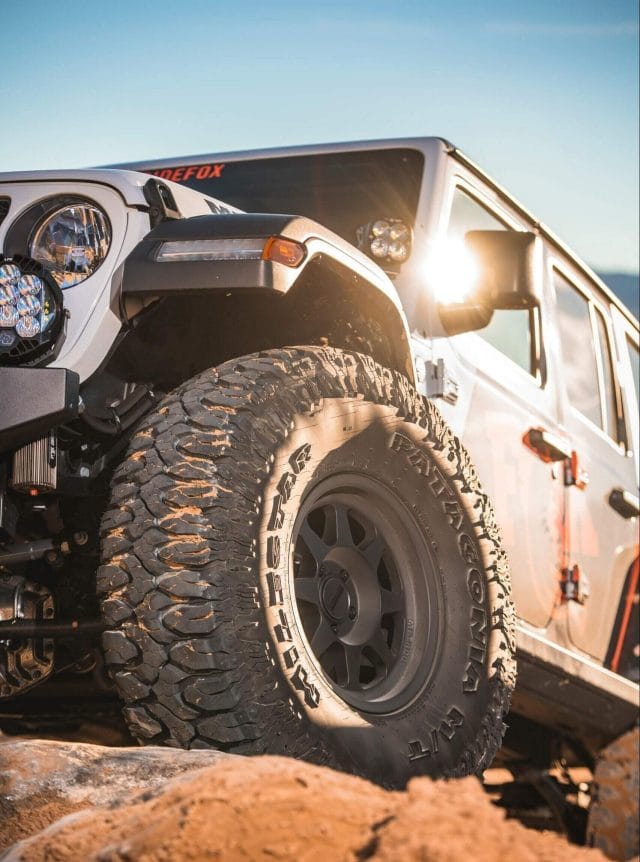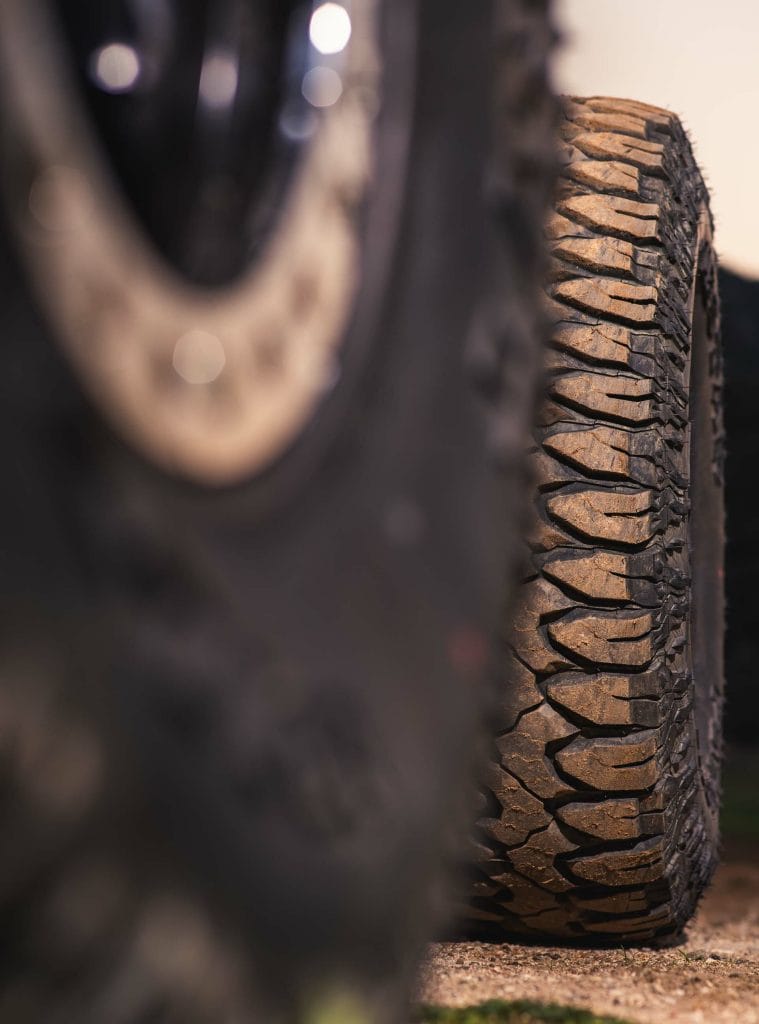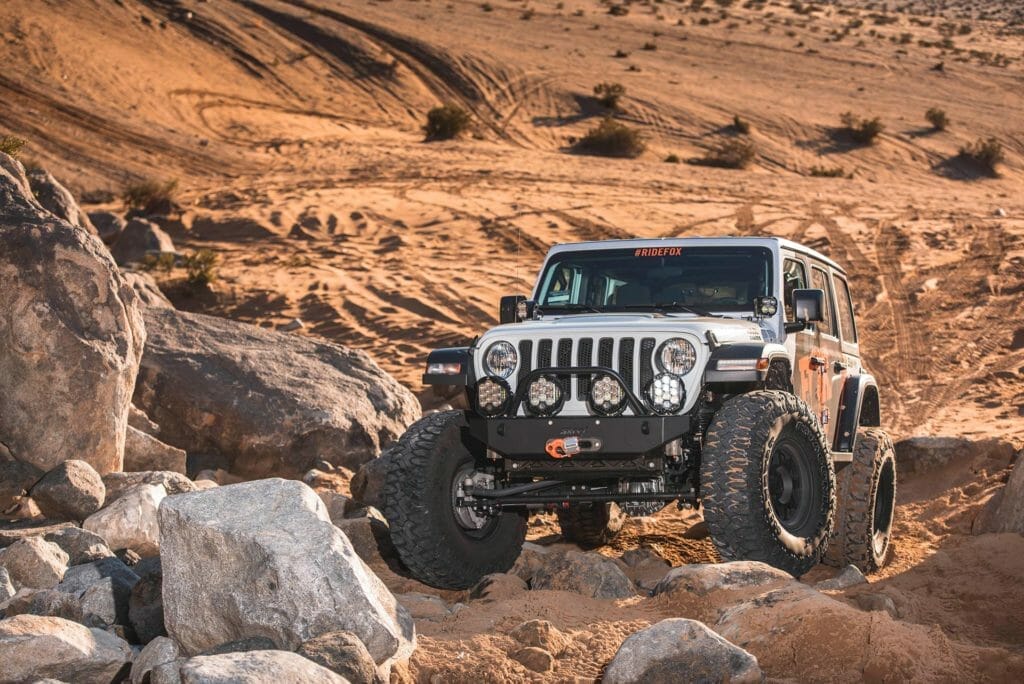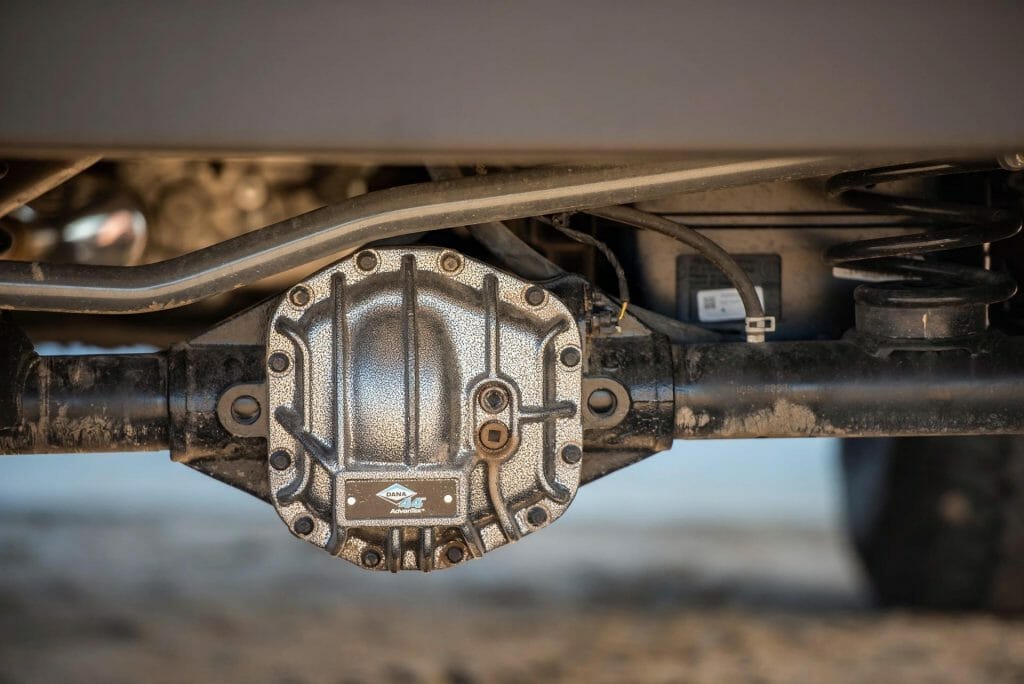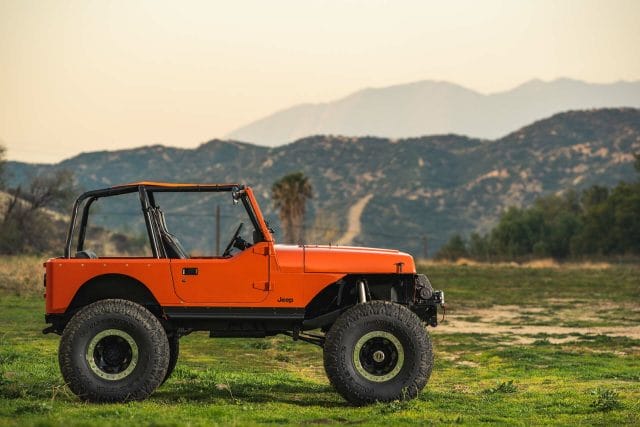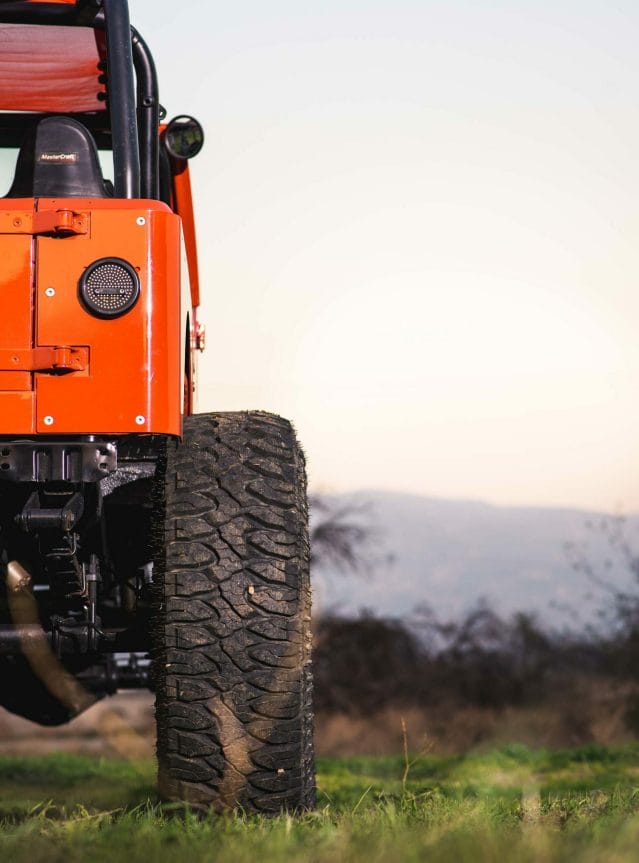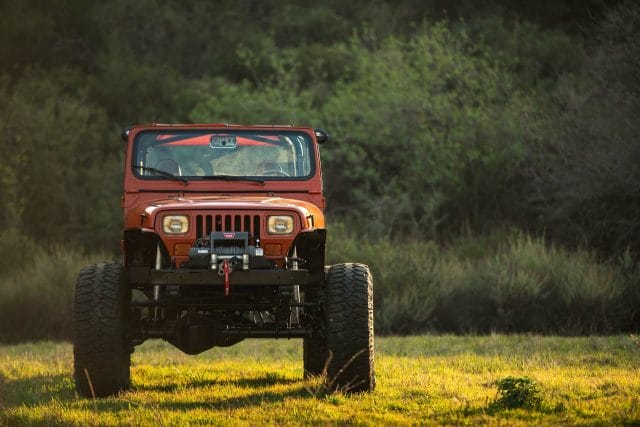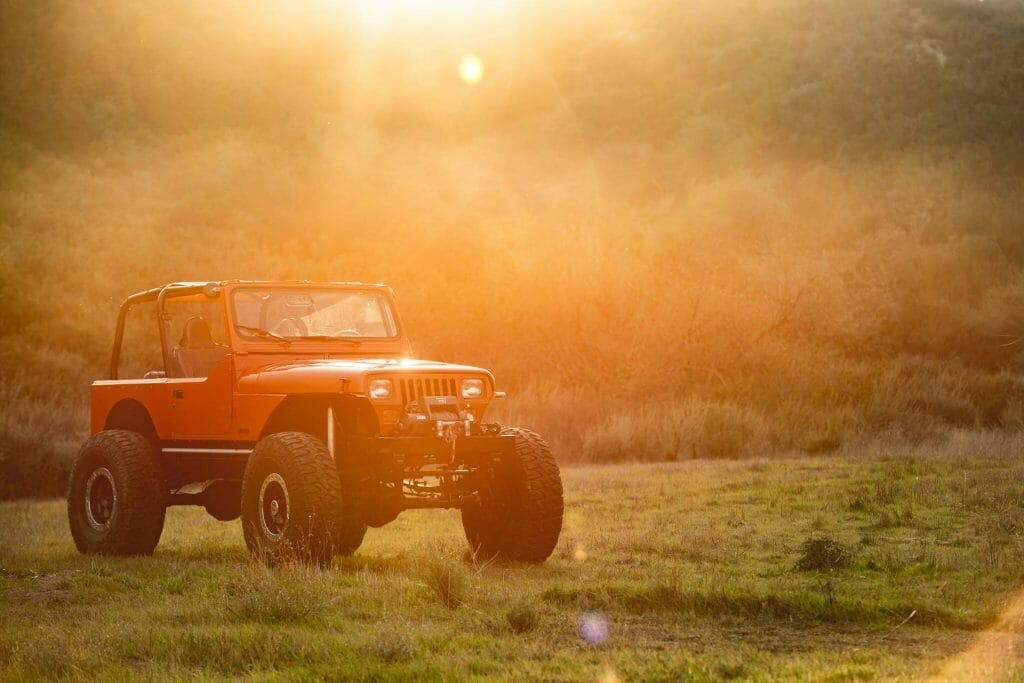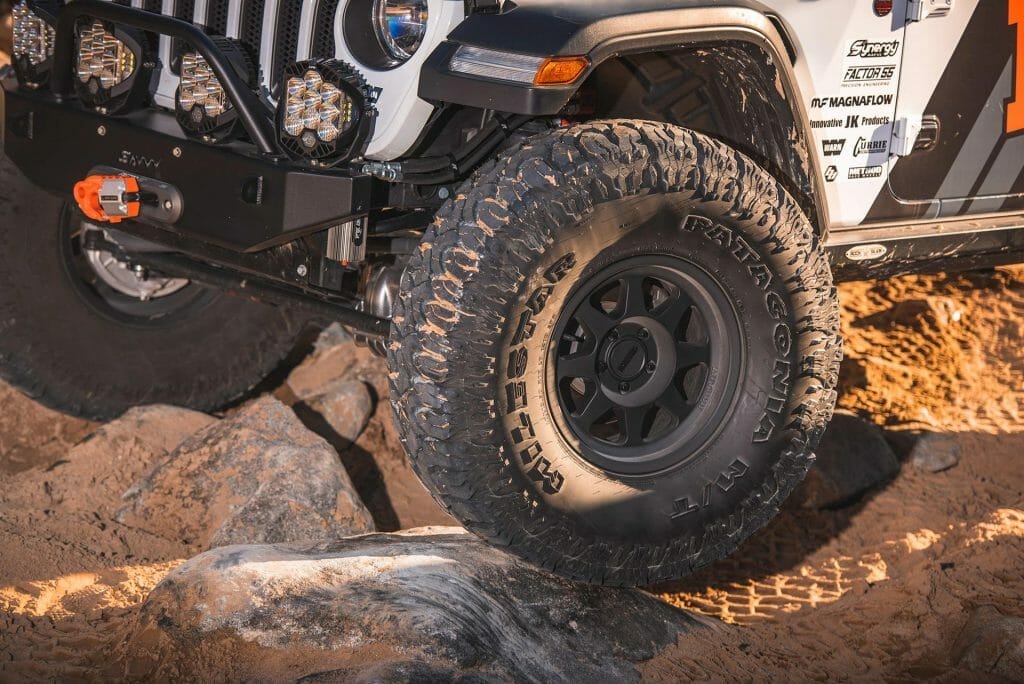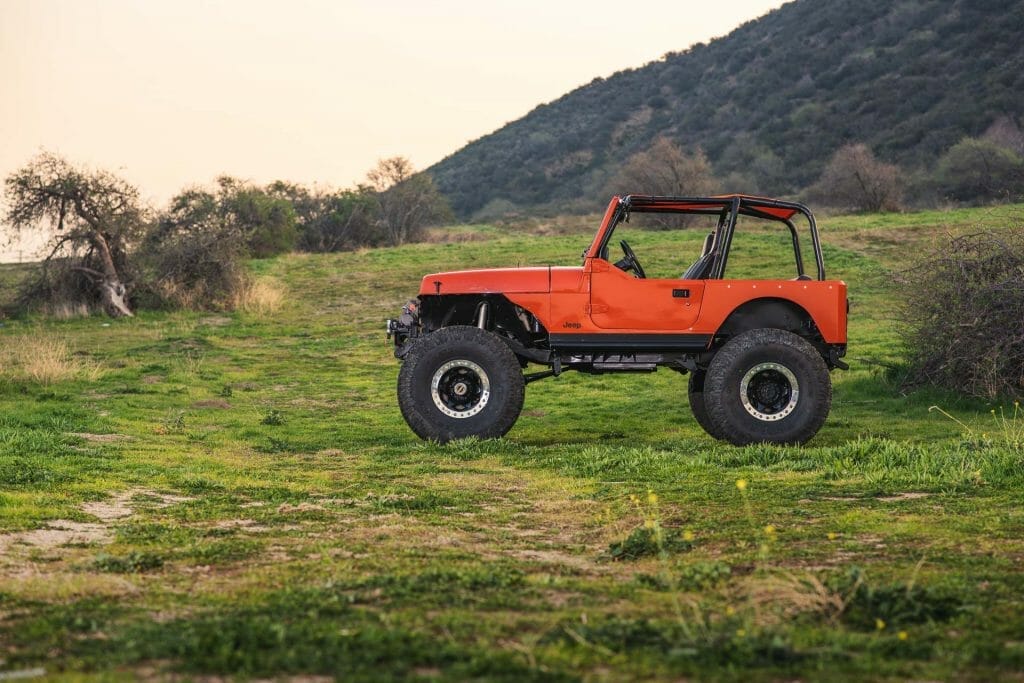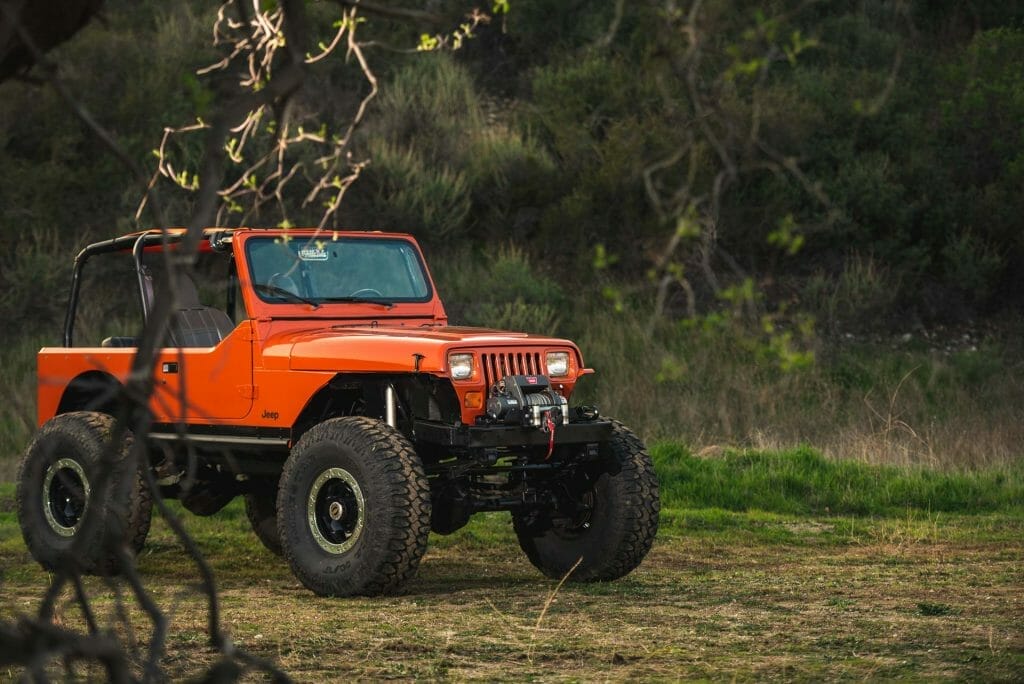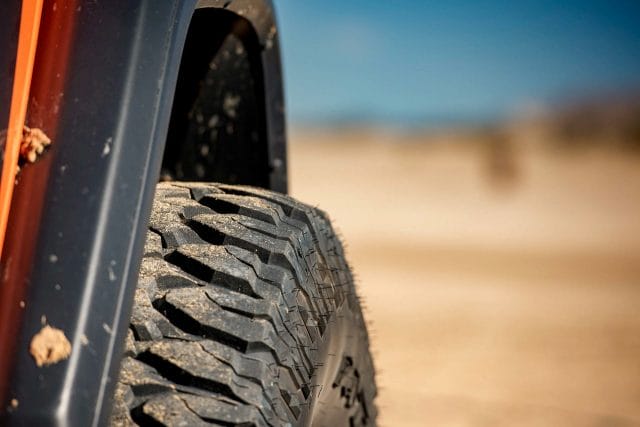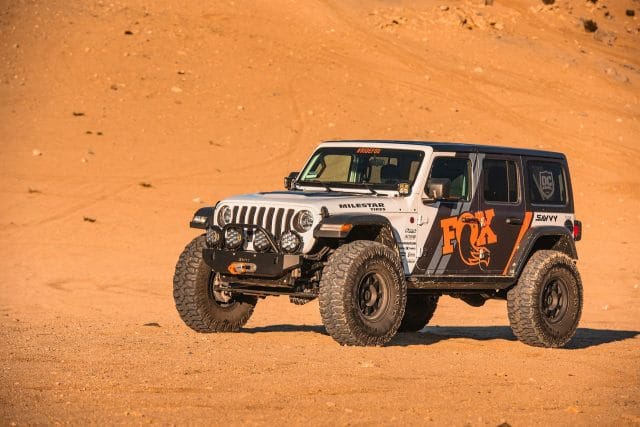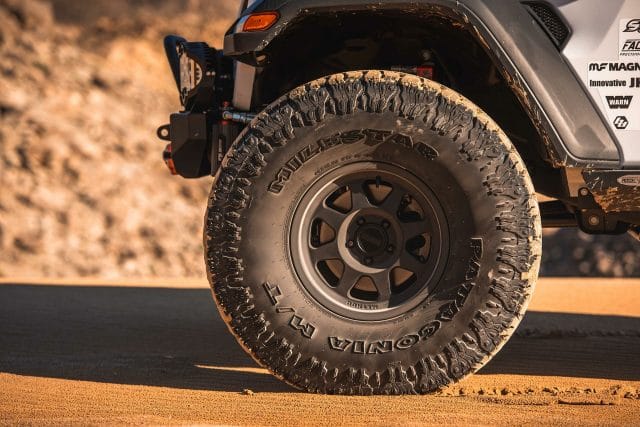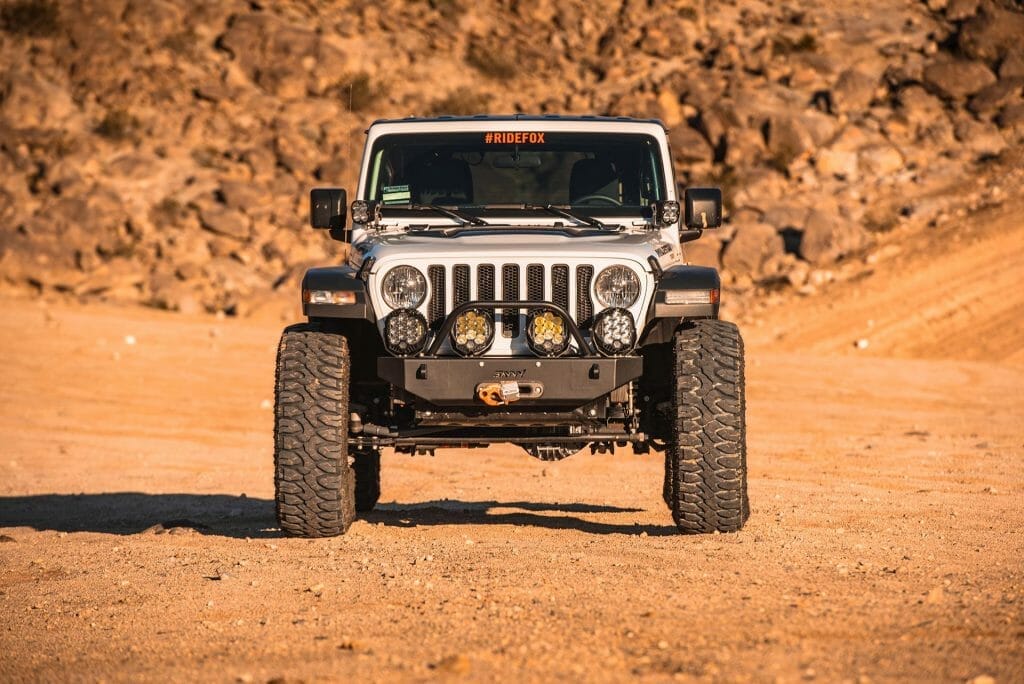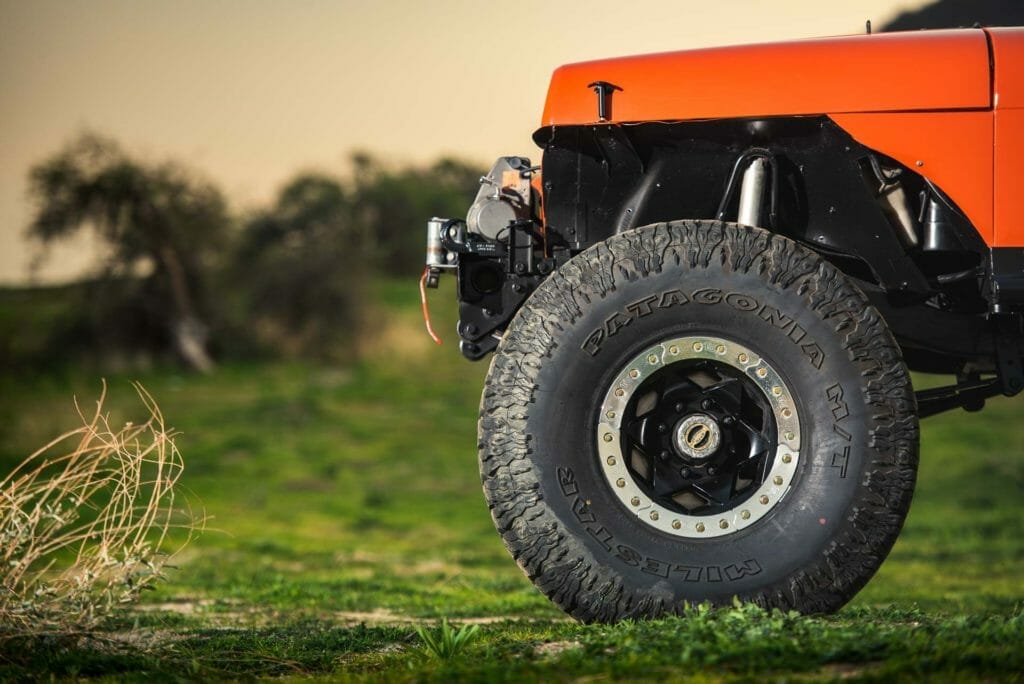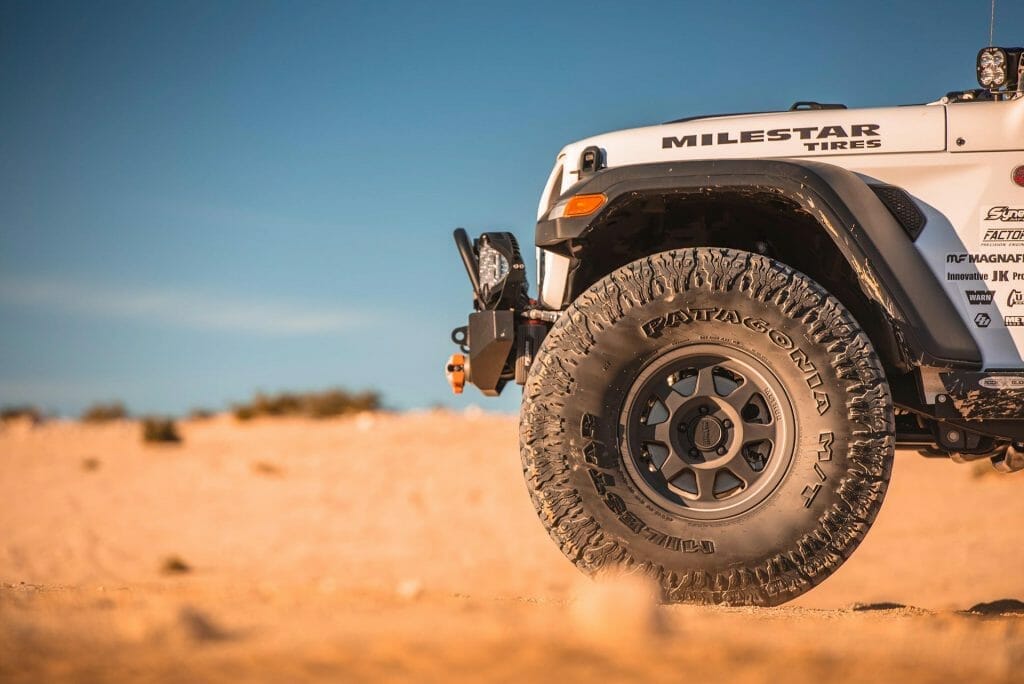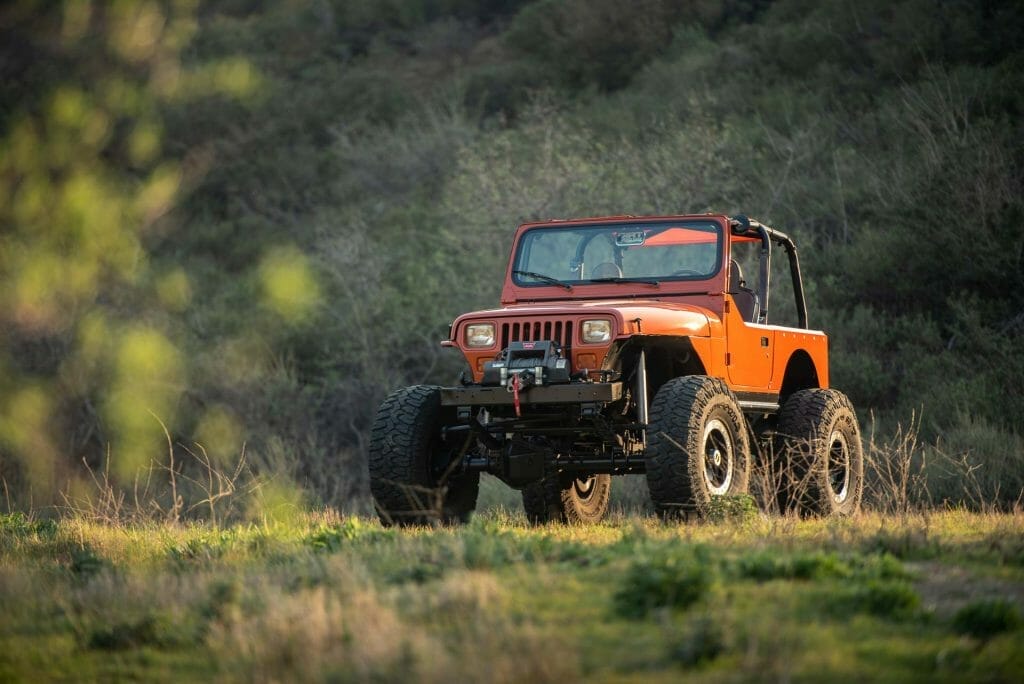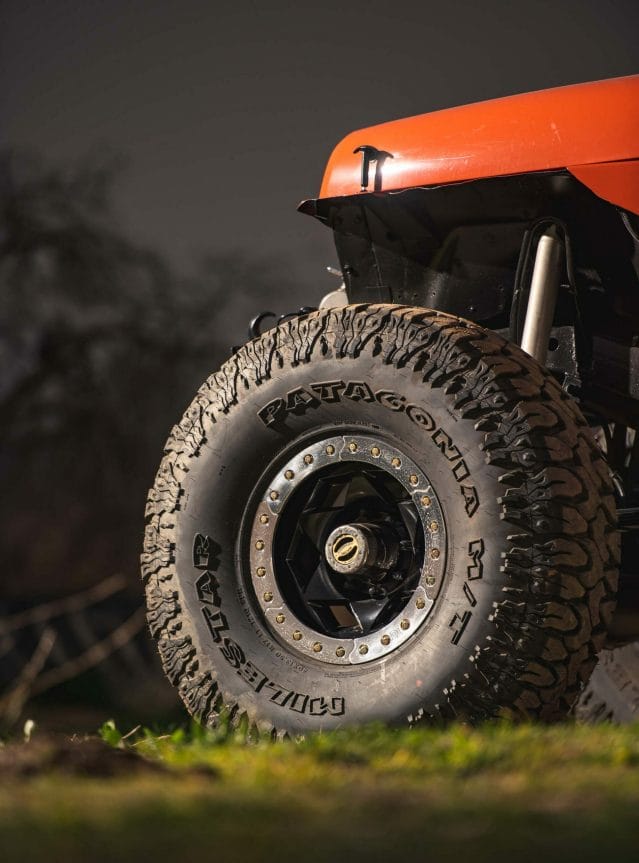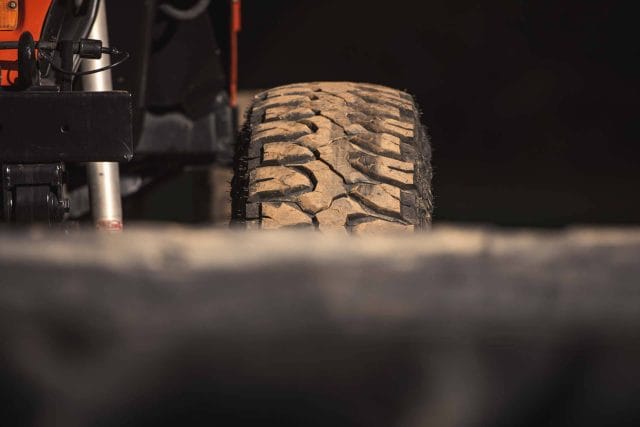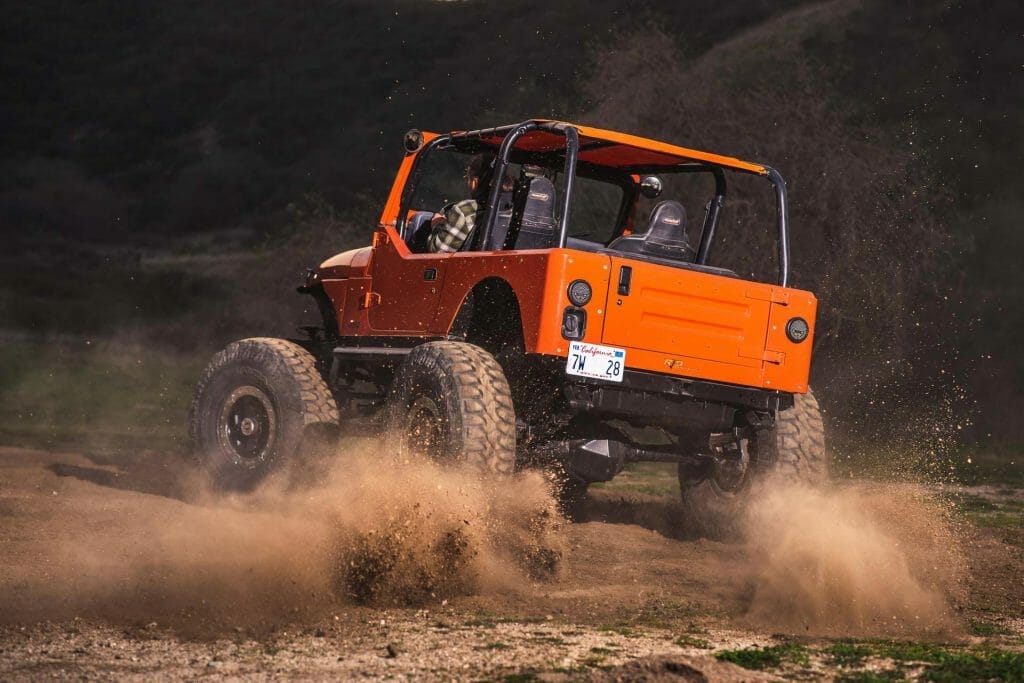Going off-roading means you need big tires and the bigger the better, right? Well, maybe not. There are some things you need to take into consideration before going oversized.
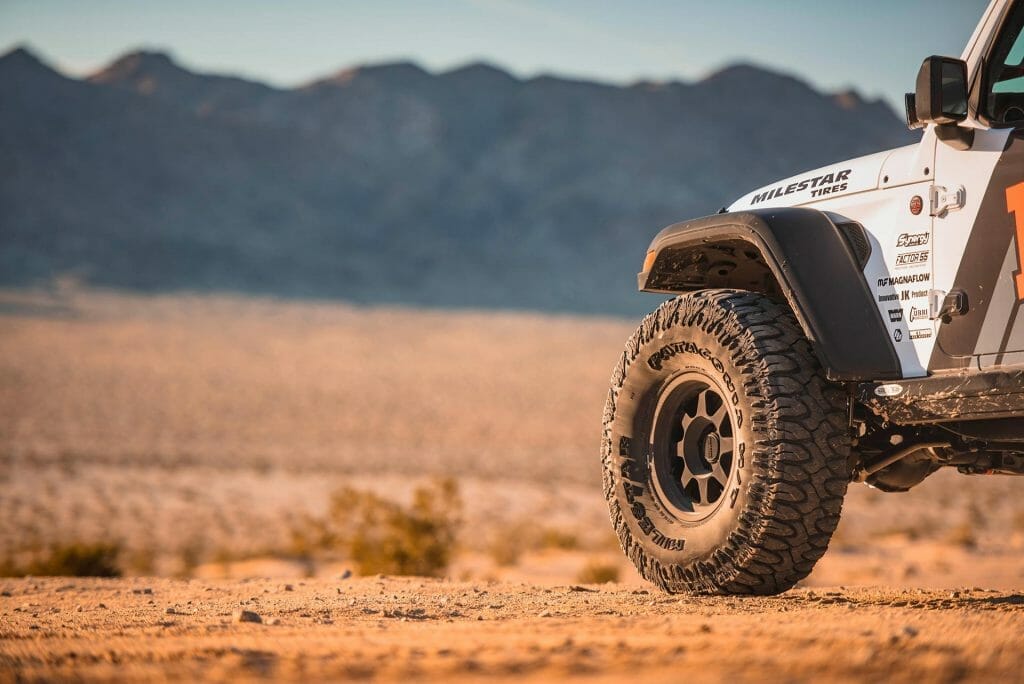
Tires: 40″ Milestar Patagonia M/Ts
First, we must confess that this is a bit of a generalization. What we’ll be discussing here might not be exactly what your truck or SUV needs to make that jump to a 40-inch tire. For example, your rig might come with axles strong enough to turn a 40 without breaking the splines or itself in half. You might be able to remove your fenders on your Jeep but the guy in the F150 can’t.
If you’re just a mall crawler, you might be fine with mostly stock stuff, but if you do go off-road, you’ll need upgrades. So, this will be a guide of things to take into consideration before plunking down cash on those big tires. We won’t touch on anything specific to any single vehicle.
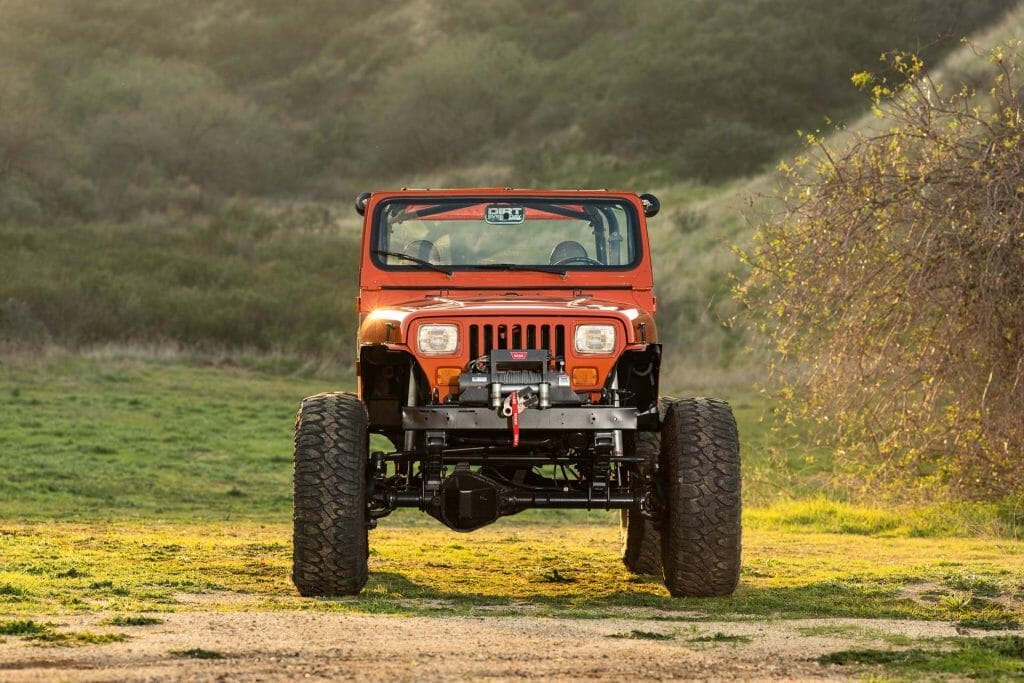
Tires: 40″ Milestar Patagonia M/Ts
Let’s start with the thing everyone points out as the first thing to change or at least modify: your axles. First, why? Why do you need to consider your axle when changing to larger diameter tires? Much of it has to do with the diameter and additional weight of the tires. Yes, you need to re-gear (and recalibrate your speedometer) to overcome the increased overall gear ratio. A 33-inch tire will have a rollout of 103.7-inches and will rotate 630 times per mile.
A 40-inch tire, on the other hand, will have a rollout of 125.7-inches and will rotate 517 times per mile and means you are going further on each rotation. By changing to a taller tire, you’ve essentially increased your overall gear ratio and will be showing a slower speed than what you’re actually doing. So, if you were doing 65-MPH with a 33×12.50, you’ll be doing nearly 80-MPH with a 40×13.50 while still showing 65-MPH.
“…if you’re going with big tires, most likely plan on going with bigger axles at the same time.“
This means you would not only have to recalibrate your speedometer but also need to re-gear to keep the engine RPMs close to the same for the corrected speed. Fortunately, there are many online calculators to help you determine what gear you need for the tire size increase as well as handheld tuners that allow you to recalibrate your speedometer for your tire size and gearing.
That won’t be the only problems with your axles, though. Because of the increased weight, you’ve also increased the rotational mass and resistance to rotation. This means you’ll need more torque and you’ll do that by adding power or decreasing your gear ratio or both. This increases stress on the axles and usually leads to failure at the splines and axle shafts on straight axles and, additionally, failure of U-joints or constant velocity joints on independent axles. So, if you’re going with big tires, most likely plan on going with bigger axles at the same time.
You’ll probably want to invest in new driveshafts, as those will be the next weakest links when it comes to transferring torque to your axles. Most truck and SUV transmissions and transfer cases can operate fine with big tires, but you’ll want to inspect them more often or consider a swap out for heavier-duty versions from the aftermarket. You won’t necessarily need an Atlas or even an NP205, but definitely look for upgrades for your chain-driven New Process transfer case that will allow it to handle more torque. However, if you have a regular NP241, get something better or at least an NP241HD.
You’ll need a lift, even if you already have a 2- or even 3-inch lift you’ll need to go a bit higher to clear the tires. This is where an IFS suspension starts to lose its advantages as you raise the truck higher, it will continue to ruin the steering and feel of the truck or SUV. You’ll also wear parts out much quicker because of the stresses and the increased load of the lift as well as the tires.
“…it’s probably best for only hardcore off-road rigs and showboaters.“
You’re looking at a custom suspension regardless if you stay with your IFS or swap the front to a solid axle. For the rear with leaf springs, you’ll be able to find re-arched springs for a decent lift without needing to resort to a huge block for sprung-over axles (where leaf sits on top of the axle). For sprung-under, you’ll have to convert it to sprung-over or you’ll have arches so large it will be pointless.
If you don’t lift, the body will need extensive modification for a 40-inch tall tire to work. If you don’t want to cut sheet metal, your only other option will be to replace it with fiberglass parts made for prerunners and desert trucks. If you cut metal, most states will require you to have something to cover the tires and have clearance lights on fender extensions to remain legal. Easy to do on a Jeep, not so easy to accomplish on anything with a regular body.
You’ll also have to make sure the wheels you use to give you the right backspacing (offset) to clear those very wide tires. The rear can typically be more aggressive than the front and can get away with higher backspacing (lower offset). The fronts, however, need to be spaced so that you can turn properly and not rub the frame or suspension components. Again, in many states, there are also legal issues with tires rubbing the body and chassis.
Running 40-inch tires isn’t easy, in fact, it’s probably best for only hardcore off-road rigs and showboaters. It’s not impossible to run that big of a tire, but there are many, many things you need to consider before doing it. This is just a short list as there are explicit things you need to do to specific vehicles to run tires this big. The best piece of advice we can give you is to research. Look for who’s done it with a vehicle like yours and see the trials and tribulations they had to go through to make it work. Then, decide if you’re willing to do the same.
If not, there’s nothing wrong with running 35s on your truck, SUV or Jeep and they are plenty capable. Just ask the guys who race in the Ultra4 Every Man Challenge.
The post GOING BIG: A GENERAL GUIDE TO GOING TO 40-INCH TIRES appeared first on STATE OF SPEED : PERFORMANCE, SPEED, AND THE CULTURE THAT DRIVES IT.

